Most (if not all) flight instructors and many pilots have heard the saying that goes something along the lines of, “The fuel gauges are only required to be accurate when they’re empty and in straight-and-level flight.”
I was told this quote several times by my instructors during various points during my flight training when we dipped the tanks before each flight and found one of the fuel gauges either indicating way off the mark or had no reading at all. We would squawk it, but continue with the flight as planned.
This is a perpetuated falsehood that I also was guilty of promulgating until I did more research and found it to be flat-out wrong. Here is the proof:
The first, easiest and most obvious places to look is no further than to everyone’s favorite and familiar § 91.205 (b)(9) (a.k.a. one part of ATOMATOFLAMES). The wording is very clear saying, “…the following instruments and equipment are required… Fuel gauge indicating the quantity of fuel in each tank.” You will notice there is no provision for “most” or “average” or “almost”, nor is there anything that says one working gauge is okay if the tanks are ‘cross-fed’. The regulation specifically says, “…each tank.”. The gauges must be reasonably accurate as they were intended to be, otherwise they would not be indicating the quantity of fuel in each tank. Simple enough.
Not only is ignoring or downplaying the need for such an important instrument an example of poor ADM, it can serve as an example for students to emulate the same behavior later on when they are alone, or worse, pass that same indifferent behavior on to others.
Since fuel exhaustion is one of the leading causes of General Aviation accidents every single year and finding that 95% of all fuel management–related accidents were associated with pilot error, this should be an easy one to get everyone to be serious about.
Unfortunately, this is where the excuses being used as ‘rationale’ start coming in to play; “I’ve dipped the tanks and know exactly how much fuel I have”, “My trip isn’t that long”, “I’ve done this lots of times and it’s been fine.” This is called Normalization of Deviance. Don’t think that this could happen to you? This type of behavior is what ultimately led to the Space Shuttle Challenger Disaster as former shuttle astronaut Mike Mullane discusses.
If all goes well and the flight is uneventful it reinforces the desire to continue that behavior. The problem in that logic becomes apparent when you start to add a few very probable “what ifs”. What if the gas cap wasn’t secured well enough and flew off in flight sloshing fuel out of the tank? What if a student pilot solo without an instructor around cut a few corners and didn’t bother to dip the tanks and trusted a faulty fuel gauge? More likely, what about a newly certificated pilot who’s not being shadowed by a CFI or scrutinized by an examiner rents a plane for the family and is distracted, in a hurry and/or considers checklists and verifying fuel loads something ‘student pilots’ do, takes off on a cross country flight?
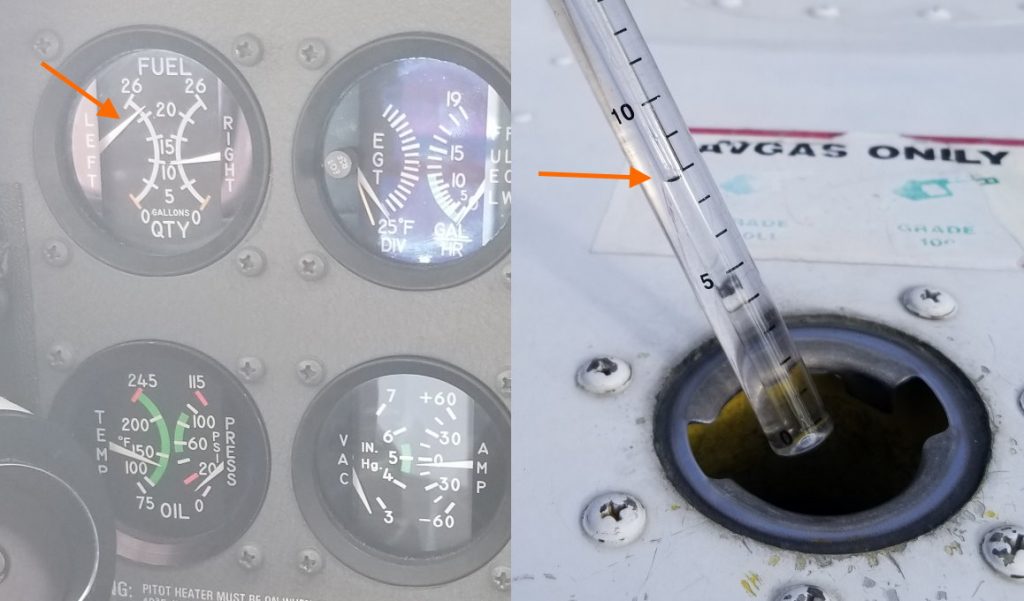
For those flight instructors, or worse commercial flight schools, thinking that it’s no big deal and will take the chance of looking the other way or discouraging instructors to squawk problems found with airplanes to save some money, may want to read this cautionary tale of a flight school that did just that and was held accountable for their actions.
Another detailed discussion on this subject can be found here on the American Flyers website.
OK. So outside of § 91.205, where does someone find the other details about this requirement? Where does it say that the airplane manufacturers have to make their gauges accurate?
Prior to the mid-1960’s there was the Civil Air Regulations (CARs) Part 3. Scanned PDFs of the old regulations can be found there, but we’re not going back that far for this example.
Since the mid-1960’s manufacturers of certificated airplanes are required to adhere to Part 23 of Title 14 in the Code of Federal Regulations when designing and building their airplanes. However, since the CFR changes periodically, it is important to take into account the date of certification for a specific airplane and look at the historical CFR to see what standards were in place at that time.
Unfortunately, current and historical regulations are not in one easy to search database. For very new airplanes certificated since 1/03/2017 it is easy to search the new Title 14 Chapter I eCFR here. Then just select the appropriate section and date range and ‘CTRL + F’ to search.
For example; to check the regulations for a Cessna 172S manufactured in 2017 use the date range tool on the eCFR page to look at what regulations were in effect at that time and what the manufacturer was specifically required to adhere to.
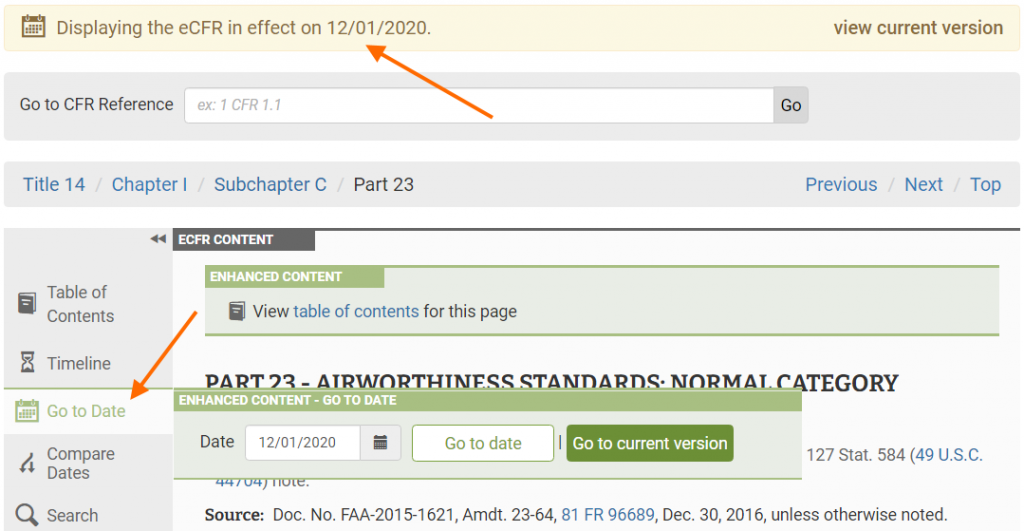
If the date selected doesn’t apply to a set revision date, the website will tell you and which date to select.

Selecting the ‘first date of content available’ will open the page and using the ‘FIND’ tool searching for the keyword ‘fuel quantity indicator’ will be the easiest way to get to our example.
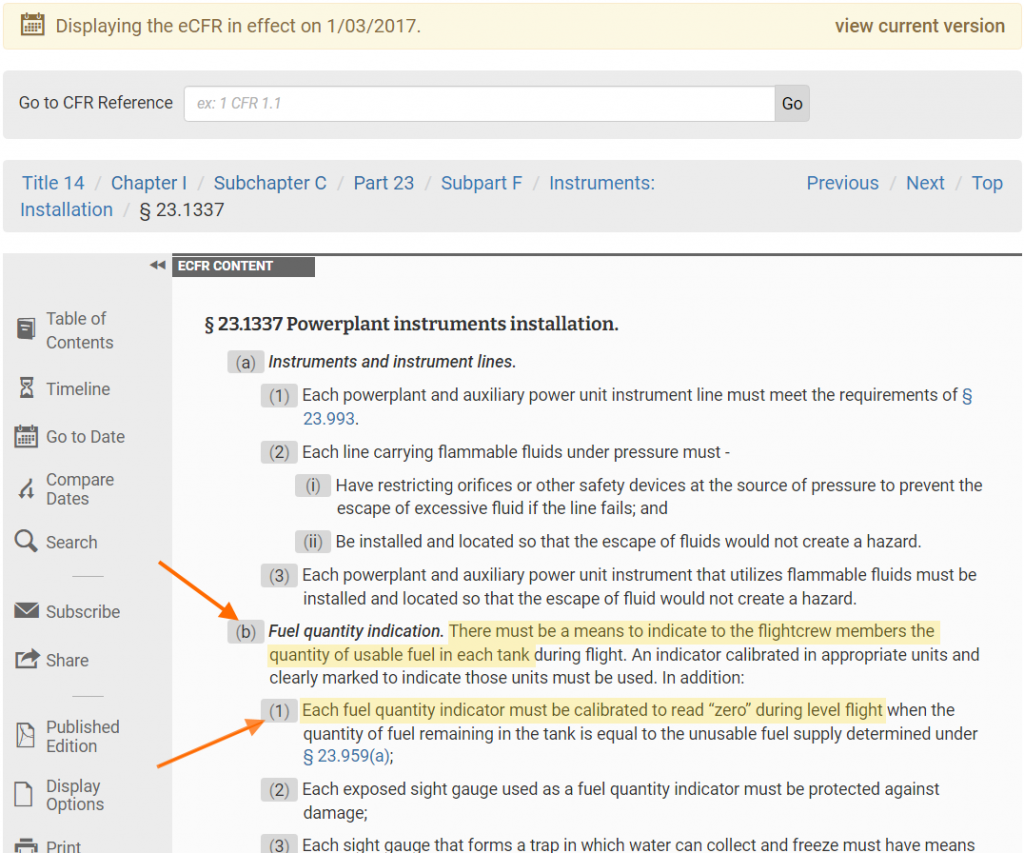
In the example above you can see where the old “empty in straight and level flight” saying probably came from in § 23.1337(b)(1). What seems to have been missed is the text in § 23.1337(b) which clearly states that the “…quantity of usable fuel in each tank…” must be indicated. Again, there is nothing that allows for “most”, “close to” or “thereabouts”. The sentence is very short and the requirement is very clear. The gauges must be working properly if they are going to indicate usable fuel.
Prior to 2017 searching the regulations isn’t as pretty. The historical eCFR site has moved to a part of the new Dynamic Regulatory System and probably the best place to start is to browse to the Title and Section you want to start from and then enter some search terms to get a somewhat filtered result, just be sure to not filter it too restrictively.
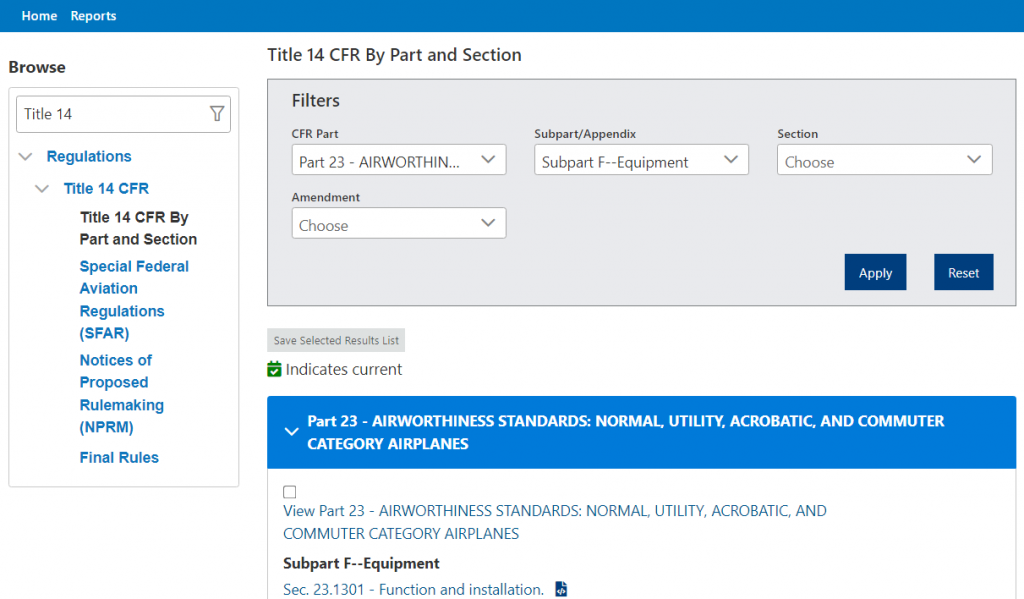
Scrolling down to Sec. 23.1337 and clicking the link finally gets you to the historical regulation. In the upper right corner is an “AMENDMENTS” link to open a drop-down list of various versions of that regulation as it has been updated over the years and as it applied to aircraft being certificated at that time.
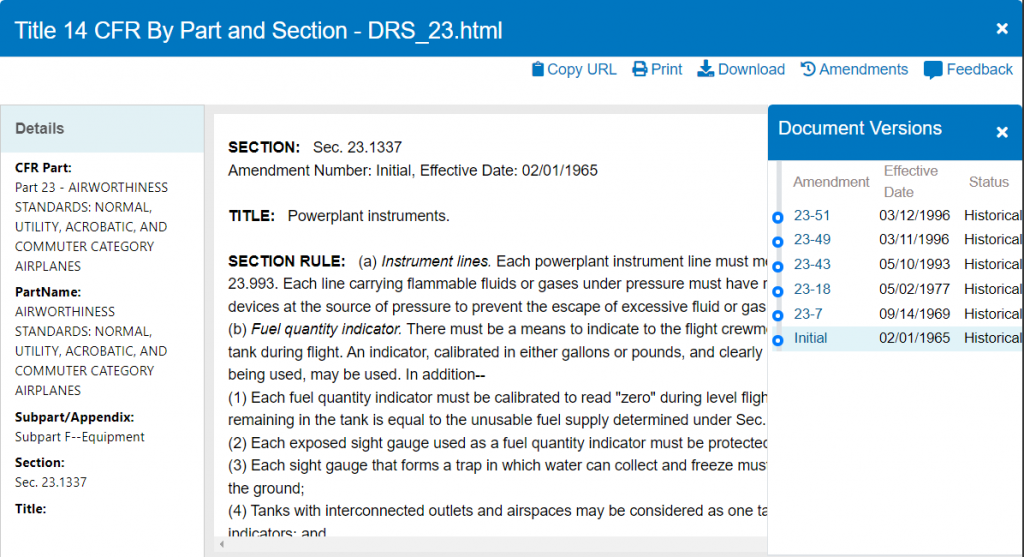
It was a long walk to get here, but as I’ve shown how we can check current and historical regulations on this (or any) area, there is nothing in the regulations that allows room for anyone to create excuses as to why it would be ‘okay’ to fly an airplane with defective, malfunctioning, inaccurate or just plain broken fuel gauges.
Fly safe!
